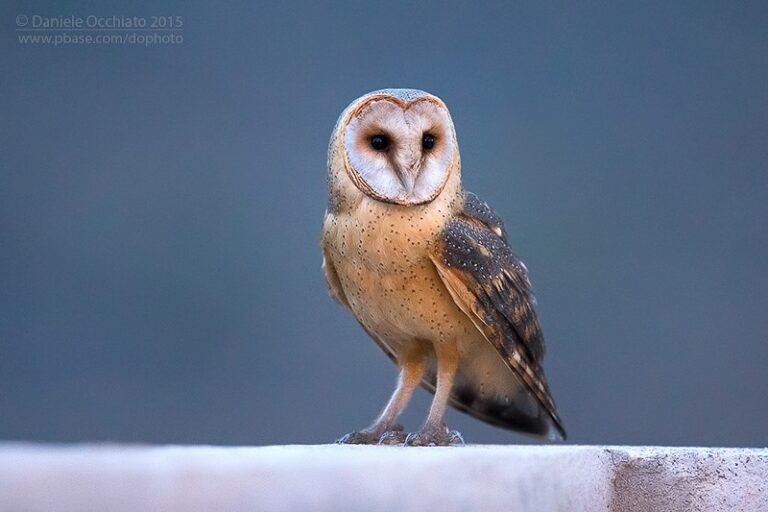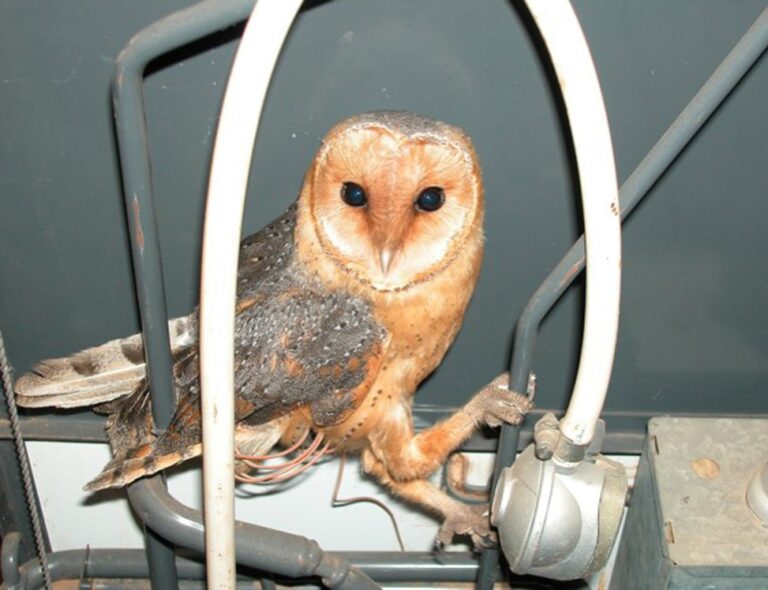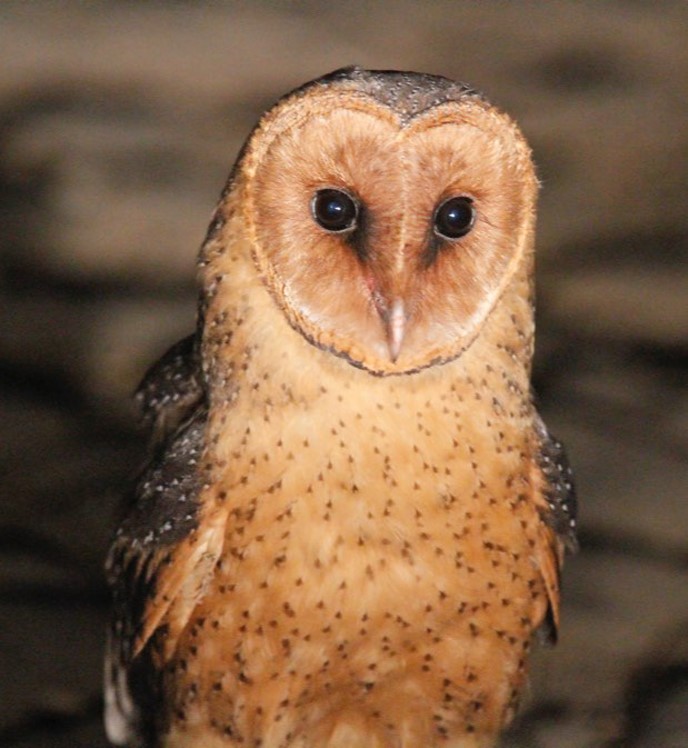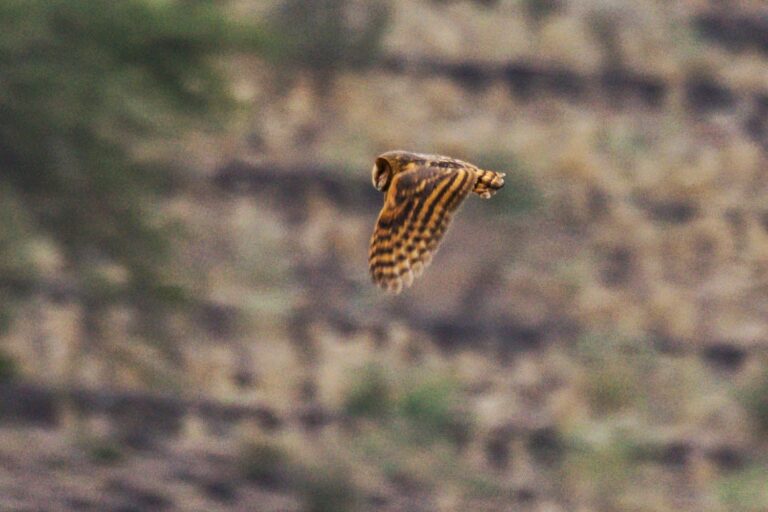Birdfinding.info ⇒ An uncommon, localized, little-known Cape Verde endemic with a limited distribution. It has been found most consistently around the Barragem de Poilão on Santiago.
Cape Verde Barn Owl
Tyto detorta
Endemic to the Cape Verde Archipelago, where it apparently occurs on most islands, with recent records from Santo Antão, São Pedro, Ilhéu Branco, Ilhéu Raso, Santa Luzia, São Nicolau, Boavista, Santiago, Maio, Santiago, Fogo, Brava, Ilhéu Grande, and Ilhéu de Cima. (The only major island in the archipelago that apparently has no recent records is Sal.)
Identification
A relatively colorful barn owl, with rich buffy or orange plumage. It may be the only barn owl expected on Cape Verde—however, Mikkola (2013) writes that the “African Barn Owl” also occurs there.

Cape Verde Barn Owl with buffy underparts and pinkish-white facial disk. (Barragem de Poilão, Santiago, Cape Verde; March 21, 2015.) © Daniele Occhiato

Cape Verde Barn Owl. (Boavista, Cape Verde; May 25, 2004.) © Pedro Lopez Suarez
The upperparts are mostly gray or gray-brown with white spots on the wing coverts and back.
The underparts are mostly buffy or orange with dark spots.

Cape Verde Barn Owl with orange-buffy underparts and facial disk. (Barragem de Poilão, Santiago, Cape Verde; March 4, 2012.) © Eric Didner
The facial disk typically appears either pinkish-white, buffy, or orange with a golden-brown rim. In many individuals the facial disk is approximately the same shade as the underparts.
In flight, the wings and tail show bold orangish-and-blackish bands, above and below.

Cape Verde Barn Owl in flight, showing extensively orange-buffy underparts, including the underwings and undertail. (Santiago, Cape Verde; March 2015.) © Herbert Bödendorfer

Cape Verde Barn Owl in flight, showing colorful orange-and-blackish bands on the wings and tail. (Santiago, Cape Verde; March 2015.) © Herbert Bödendorfer
Voice. The flight call is a shrill, but clear, scream, which lasts for 1 to 2 seconds, repeated often: e.g.,
Vila do Maio, Cape Verde; October 3, 2015. © Sergio Ancona
(For a detailed review with more recordings and sonograms, see The Sound Approach: Cape Verde Barn Owl.)
Notes
Monotypic species. Traditionally classified as a subspecies of the Barn Owl (T. alba), but more recently treated as a subspecies of the Western Barn Owl (T. alba) by several taxonomic authorities.
Provisionally treated as a separate species here because both recent guidebooks to the owls of the world, König and Weick (2008) and Mikkola (2013), recognize it as such.
References
Aliabadian, M., N. Alaei-Kakhki, O. Mirshamsi, V. Nijman, and A. Roulin. 2016. Phylogeny, biogeography, and diversification of barn owls (Aves: Strigiformes). Biological Journal of the Linnean Society 119:904-918.
BirdLife International. 2019. Tyto alba (amended version of 2016 assessment). The IUCN Red List of Threatened Species 2019: e.T22688504A155542941. https://dx.doi.org/10.2305/IUCN.UK.2019-3.RLTS.T22688504A155542941.en. (Accessed December 8, 2023.)
eBird. 2023. eBird: An online database of bird distribution and abundance. Cornell Lab of Ornithology, Ithaca, N.Y. http://www.ebird.org. (Accessed December 8, 2023.)
Garcia-del-Rey, E. 2011. Field Guide to the Birds of Macaronesia: Azores, Madeira, Canary Islands, Cape Verde. Lynx Editions, Barcelona.
iNaturalist. 2023. https://www.inaturalist.org/. (Accessed December 8, 2023.)
König, C., and F. Weick. 2008. Owls of the World (Second Edition). Yale University Press.
Mikkola, H. 2013. Owls of the World: A Photographic Guide (Second Edition). Firefly Books, London.
The Sound Approach. 2019. Cape Verde Barn Owl, Tyto detorta. https://soundapproach.co.uk/species/cape-verde-barn-owl/.
Xeno-Canto. 2023. Western Barn Owl – Tyto alba. https://xeno-canto.org/species/Tyto-alba. (Accessed December 8, 2023.)
